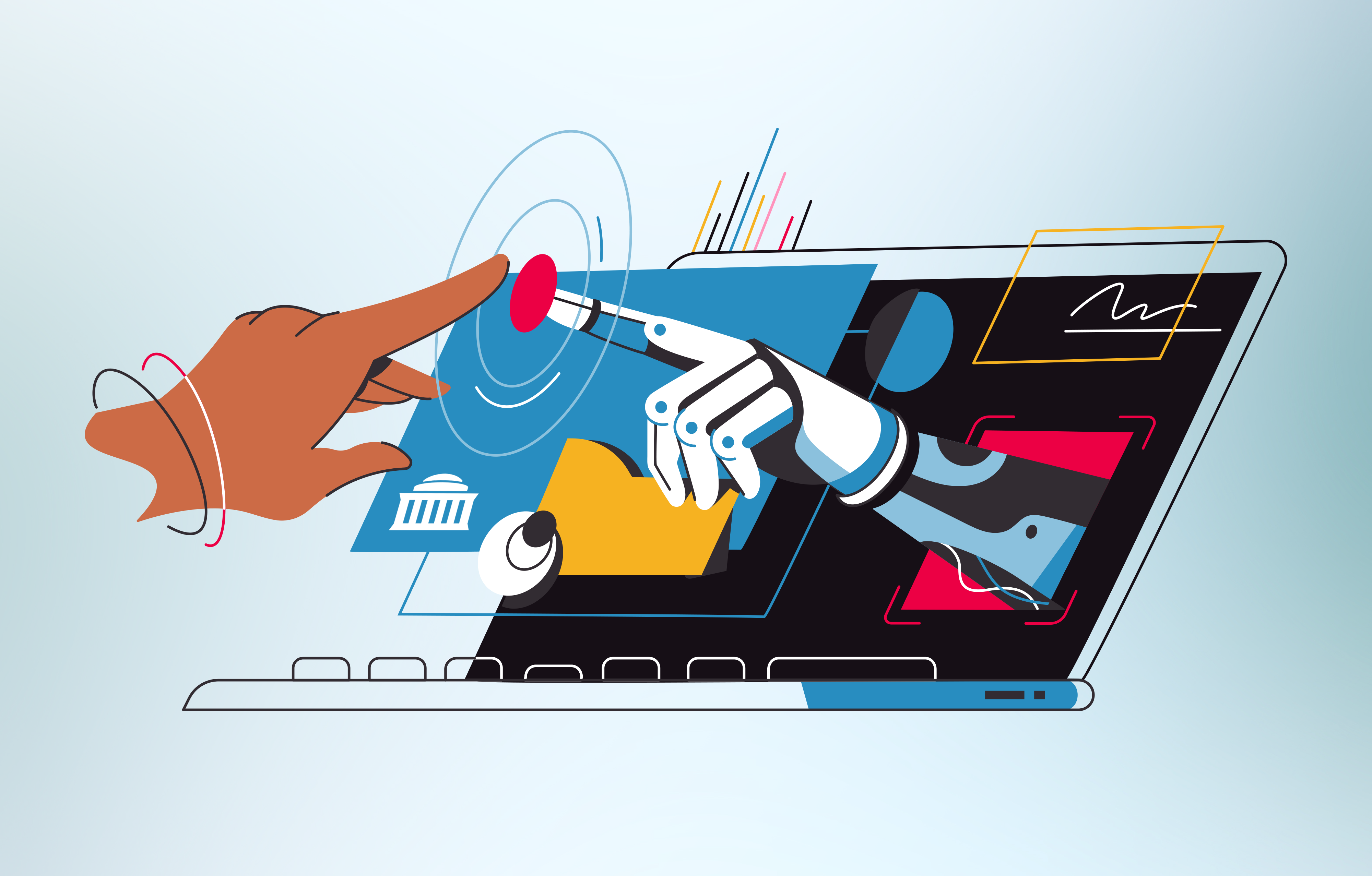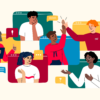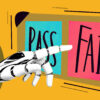Picture a classroom where future business leaders don’t just read about AI’s role in communication—they experience it first-hand. Melissa Webster couples traditional pedagogy with the capabilities of generative AI to shape the communicators of tomorrow.

Melissa Webster, Lecturer, Managerial Communication at MIT Sloan
When she decided to integrate ChatGPT into her Spring 2023 undergraduate course for the next generation of business leaders, Melissa Webster, Lecturer in Managerial Communications at MIT Sloan, set two distinct objectives: First, she aimed to test the integration of ChatGPT into her curriculum while preserving academic integrity. Second, she sought to develop her students’ ability to discern quality in AI-generated content, effectively prompt generative AI, and understand the technology’s broader impact on business communication.
In an era where students have direct access to generative AI, learning to evaluate and analyze its output nurtures a discerning mindset that is vital for navigating the complexities of modern business environments, potentially safeguarding against misinformation and fostering informed decision-making. Her forward-thinking approach not only brought cutting-edge technology to the classroom but also aligned perfectly with the school’s mission to “develop principled, innovative leaders who improve the world and to generate ideas that advance management practice.”
Setting the Stage
Recognizing AI’s growing influence in contemporary communication, Webster designed an assignment divided into three related sections. Each section had two goals: to delve into AI’s strengths and weaknesses in business settings, and to enhance students’ essential communication abilities. Here’s a detailed look:
Part 1: The AI-Generated Cover Letter
In this first exercise, students were asked to draft cover letters for a business analyst rotation program using ChatGPT. This assignment allowed students to prompt the AI as many times as they wished—they were not graded on their prompting process—but they were not allowed to modify the generated output. The aim was to underline the importance of strategic communication in prompting (CAST, 2018, Checkpoint 7.2).
Part 2: The Role-Playing Scenario
Webster then anonymized and circulated the AI-generated cover letters from the first part among her students. They were tasked with selecting the most compelling cover letter and justifying their choice via email to their ‘boss.’ This role-play scenario not only honed their persuasive communication skills, a critical competency in effective management (CAST, 2018, Checkpoint 8.3), but also required them to analyze and evaluate the letters in the first place. As delineated in Bloom’s Taxonomy, these higher-order thinking processes allow for a richer and more complex understanding of a given topic (Anderson & Krathwohl, 2001), as well as foster skills that are integral in navigating today’s dynamic business landscape.
Part 3: Discussing the Role of ChatGPT in Workplace Communication
Finally, the class transitioned into a panel discussion where three early AI adopters shared their insights, facilitating a deeper conversation about the potential and limitations of AI, such as ChatGPT, in a business setting. This discussion was particularly robust, given the hands-on experience students had garnered through the previous assignments, encouraging them to synthesize information and generate insightful discussions (CAST, 2018, Checkpoint 5.2).
The Student Perspective
Following the in-class discussion panel, several students shared their thoughts on the potential and limitations of ChatGPT in the business environment:
- “ChatGPT is not a replacement for human interaction but complements it.”
- “It was really enjoyable to have an open dialogue about the practical usage of GPT and AI in general.”
- “The panel made me more optimistic about the usefulness of ChatGPT. I see it as a tool to clarify and double-check my existing writing.”
- “AI language models are only as good as the prompts you provide them.”
- “You have to be very careful about relying on ChatGPT too heavily for numerous reasons. Firstly, you are probably going to have to discuss your work in person, and if you relied too heavily on ChatGPT, you will not be an expert. Also, ChatGPT makes errors, so it is always important to check your work.”
These reflections underscore the importance of this assignment in fostering a nuanced understanding of how AI can be deployed in a business setting, furthering the objectives of the course and the broader goals of management education.
Why This Assignment Works
Faculty stand to gain significantly from incorporating this multi-stage assignment into their teaching repertoire. This approach provides a holistic learning experience for students, capturing their attention, diversifying educational content, and offering various avenues for skills demonstration (CAST, 2024, Considerations 7.2, 8.3, 5.2). Moreover, it encourages students to sharpen their evaluative and analytical skills, which are now even more critical given their frequent interactions with AI-generated content in their day-to-day lives, both inside and outside of the classroom.
It Engages the Digital Native
Most of today’s undergraduate students are digital natives, a generation comfortable with technology like never before. By bringing AI into the classroom in a hands-on manner, educators can engage students more fully, capturing their attention and stimulating interest in both technology and business communication.
There’s Rich Content Representation
By integrating AI-powered tasks alongside traditional forms of learning like role-playing and in-class discussions, the assignment enriches the educational experience. It provides diverse avenues for students to interact with the subject matter, thus making it more likely that complex concepts are understood and retained.
Skills are Assessed in Multiple Ways
Students have the opportunity to demonstrate their understanding and skills in a variety of ways – through effective prompting, persuasive writing, and thoughtful discussion. This multiplicity not only enhances student engagement but also provides faculty with a more comprehensive understanding of student competencies and learning preferences.
In summary, this multi-faceted approach not only enhances student learning but also offers faculty a flexible, comprehensive, and engaging method to teach essential business communication skills in a rapidly evolving digital landscape.
Final Takeaways: Build Tomorrow’s Lessons on Today’s Foundation
In blending traditional pedagogy with emerging technology, Webster has demonstrated how classrooms can adapt to the evolving landscape without compromising on educational rigor. Her approach is both practical and forward-looking, offering a blueprint for how generative AI can serve as a tool rather than a replacement for critical thinking and human insight. As the world of management and communication continues to change, educators like Webster show us the way forward.
MIT Sloan Faculty: We want to know how you’re incorporating generative AI in your courses—big or small. Your experiences are more than just personal milestones; they’re shaping the future of pedagogy. By sharing your insights, you contribute to a community of innovation and inspire colleagues to venture into new territories. Contact us to be featured. We’re here to help you tell your story!
References
CAST. (2024). Universal design for learning guidelines. http://udlguidelines.cast.org
Anderson, L. W., & Krathwohl, D. R. (Eds.). (2001). A taxonomy for learning, teaching, and assessing: A revision of Bloom’s taxonomy of educational objectives. Pearson.









